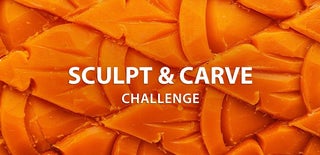Introduction: Sculpting Pickett the Bowtruckle Pen Stand
I always wanted to try sculpting. I therefore went in pursuit of an error-proof model for my first sculpture. That's what led me to decide on Bowtruckle as my model, because any faults wouldn't have a big impact on the way it looked. I didn't want to make a showcase piece, so I turned it into a pen stand.
Scroll down to find out how I made it.
Supplies
Materials required :
- Modelling clay [Air drying type]
- Wire scraps [ Aluminum/Copper] - For making the frame.
- Acrylic paints
- Super Glue
- Glass bead [For the eyes]
- Cardboard rolls.
- Cardboard sheet.
- Thread [For fixing the frame's separate components]
Tools required :
- Glue gun
- Pliers
- Sculpting tools[ Here, I used a set a screwdrivers ]
- Glue
- Craft Knife
- Hammer
Step 1: Making the Frame...
Using our model's reference image as a guide, wires are bent into the desired shape. I used thread and super glue, to join the various parts of the frame.
Step 2: Sculpting Body...
Now we can start adding the clay to wire frame model. I first shaped the clay into a basic form to serve as the foundation , then I added the surface features using a screwdriver. Talcum powder was employed to prevent my hand from sticking to the epoxy clay[ M-seal epoxy].
Step 3: Sculpting Face...
For the head, I started to form a rough cylindrical shape. Then, using a craft knife and sculpting tool, I started giving it the necessary characteristics. To create the eyes, I made small holes and filled them with glass beads. Thinly rolled clay is made to form the trademark tongue of our Pickett.
Step 4: Sculpting Leaves...
I rolled out a thin sheet of clay and then stamped the characteristics of the leaf [guava tree leaf] on it with a roller. Using a craft knife, cut out the leaf profile from the sheet. Repeat this process to make the second set of leaves. We need to wait until the clay has somewhat hardened [not too much] before attaching the leaves to the frame; else, it will be too flimsy to handle.
Step 5: Adding Details...
Now we need to add details such as scales and textures. The look of scales is created using a thin, rolled-out clay sheet.
Step 6: Tree Trunk Frame...
To construct the tree trunk structure, cardboard rolls and sheets were used. A cardboard sheet is cut into the shape of the tree trunk's base, and it is then bonded using a glue gun to the cardboard roll. With the use of a glue gun and cardboard sheets, the surface details of the tree trunk are now created as shown in the images.
Step 7: Detailing the Tree Trunk...
Rolled out clay is now used to cover the tree trunk frame. As seen in the images, a stick was used to carve the tree trunk's ridges and curves.
Step 8: Fixing the Tree Trunk Onto the Model...
Using clay, we will now attach the tree trunk to our sculpture. Leave it there to dry.
Step 9: Painting Time...
Once the model has completely dried, we can start painting it. The sculpture's painting is done using acrylic paint. To make the green paint stand out more, I started by painting a coat of white on the surface. Complete the painting using the reference image we've chosen.
That's the end of it. Now go ahead and make one for yourself...
Thank you for taking the time to read it!

Second Prize in the
Sculpt & Carve Challenge













